As an Amazon Associate I earn from qualifying purchases.
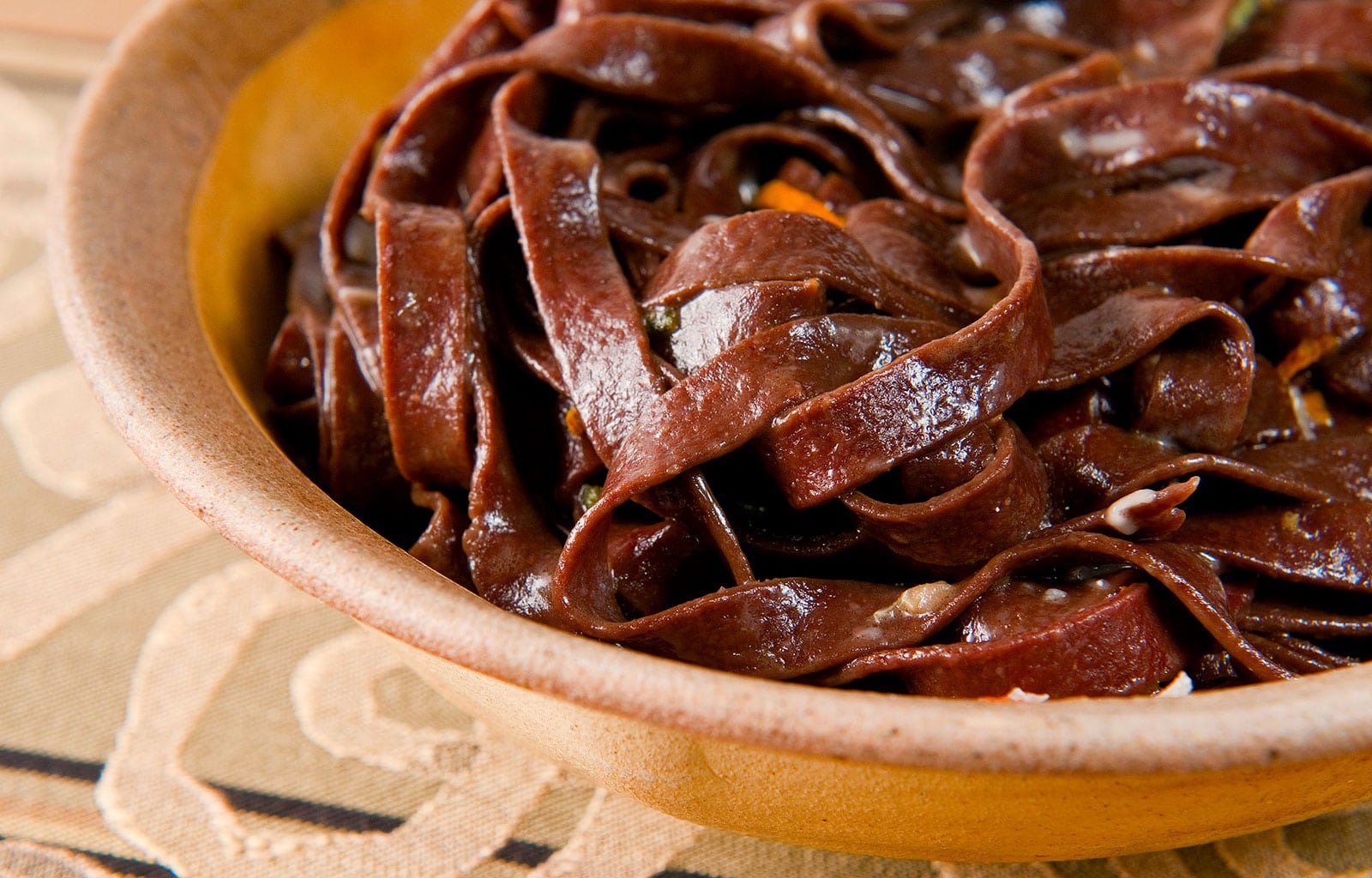
This is what you think it is. Blood pasta. Pork blood pasta, to be exact.
It’s something I’ve been wanting to make for more than a year. And let me tell you folks, as weird and as Andrew Zimmern-like as this dish is, it was totally worth the wait. This stuff rocks.
Of course, that is to say this pasta rocks if you a) eat pork, b) like pasta, and c) aren’t irretrievably skeeved out by the concept of eating something made with blood. Vegetarians might want to skip this post.
My infatuation with this pasta started with a book. Oretta Zanini de Vita’s Encyclopedia of Pasta, to be precise. I began working through some of the cooler pastas I’d read about. I made Sardinian saffron gnocchi and I made strettine, a pasta made with nettles in the flour. I made acorn pasta, a famine food of Puglia.
But always I thought of blutnudeln, pasta al sangue. Blood tagliatelle. If there is a stranger pasta that is traditionally eaten in Italy, I can’t think of one. Blutnudeln is a specialty of Pusteria, in the Trentino-Alto Adige region of Alpine Italy along the Austrian border; thus the German name.
Pasta al sangue was, historically, part of a family’s annual hog butchering ritual. It’s made with a combination of rye and wheat flours — rye being the dominant grain in this chilly area — an egg, and lots of fresh pork blood. It’s served with butter, sage and a local dry cheese. Simple.
I got a chance to meet Mrs. Zanini de Vita at the James Beard awards in 2010; her book won Best Cookbook in the Reference and Scholarship category. I practically bum-rushed her table afterwards. As best as I could in my broken Italian, I gushed to her how much I loved her book. She smiled, and said in her broken English how happy she was to have her book read in America. I was over the moon.
Finally I screwed up my courage and ordered some pork blood. It comes in gallon jugs, so I plan on making some blood sausage with it, too. For the dough, I used some Italian “oo” flour, some rye flour, an egg, a pinch of salt, and the pork blood. The raw dough was alarmingly pretty.
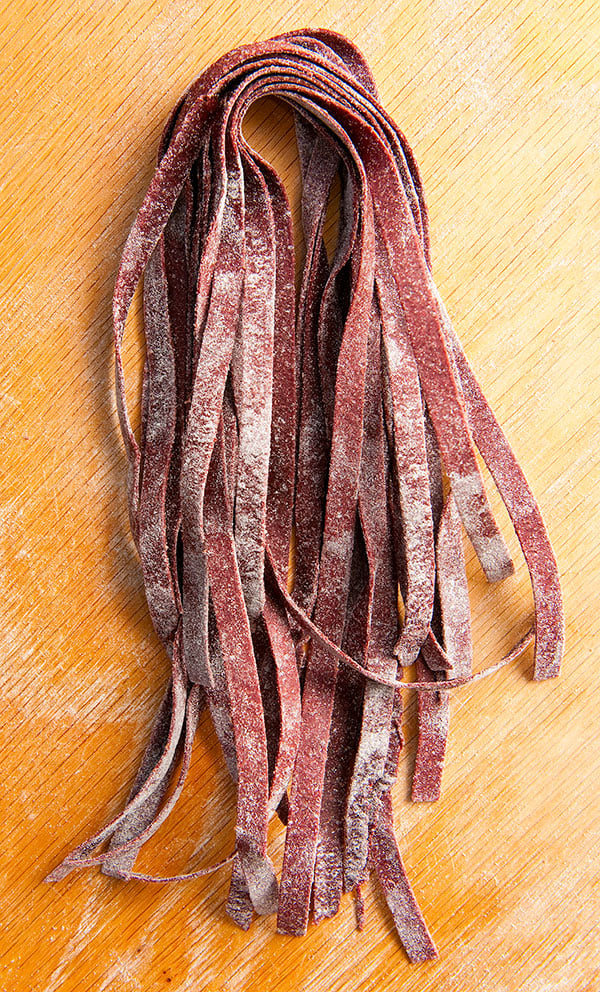
It sure looks like a beet pasta dough. But it ain’t. According to Zanini de Vita, blutnudeln are rolled out thin and cut into 3/8″ noodles, like tagliatelle. I rolled mine out to No. 6 on my Atlas (No. 9 is the thinnest setting) and ran it through my tagliatelle cutter. Pretty!
Now for the sauce. Why not make a blood orange sauce?
The sauce would be butter in which I’d fry some sage, reduce blood orange juice and top with blood orange zest, grated cheese and black pepper.
Holly and I sat down to eat. I admit to a twinge before digging in. There is something about blood that’ll do that to you. Blood, more than anything else, symbolizes life. There’s a reason many of us hate to see the sight of it, why the vampire mythology touches something deep within us. For me, meat is animal turned into food. But blood is akin to the anima of the animal itself and occupies an entirely different mental space.
Intellectually it doesn’t make any sense. But we humans are not ruled by intellect alone.

I took a bite and was immediately aware of two things: That I’d nailed the texture of this pasta — it was perfectly al dente and perfectly shaped — and that I was tasting blood. Coppery, minerally, savory. The tang of the citrus brightened the dish, the sage added bitterness, the butter smooth sweetness. I liked it.
This is not comfort food. Yes, at its core this is still pasta, and the overwhelming sensation you get while eating this dish is definitely grain, but you feel the blood’s presence with every bite. As you eat it, you can’t help but think about what went into this pasta, and about that pig.
And that’s as it should be.
Blutnudeln or Italian Pork Blood Pasta
Ingredients
- 5 ounces rye flour
- 5 ounces Italian oo or regular all-purpose flour
- 1 egg
- A pinch of salt
- 2 3/4 ounces pork blood
- 4 tablespoons unsalted butter
- 1 tablespoon fresh sage, finely sliced
- 1/3 cup blood orange juice
- Salt
- Grated blood orange zest and pecorino cheese for garnish
Instructions
- To make the pasta, whisk together the two flours and salt in a large bowl. Make a well in the center of the flour and crack the egg into it. Pour in the blood and stir everything together with a fork.
- When the dough is a shaggy mass, begin to knead it in the bowl. It will be sticky at first, but will smooth out as you knead, first in the bowl, and then on a floured work surface. Knead for 5 minutes.
- Wrap the dough in plastic wrap and set at room temperature for 2 hours, or in the fridge up to 1 day.
- Roll out the dough into 3/8-inch flat noodles that are not too thin. I use No. 6 on my Atlas (No. 9 is the thinnest). Set aside to dry.
- To make the sauce, reduce the orange juice by half, turn off the heat and add salt to taste. Set aside.
- Bring a large pot of salty water — the water should taste like the ocean — to a boil. When it boils, melt the butter in a large saute pan over medium-high heat and fry the sage. Add the pasta to the boiling water.
- By the time the pasta is floating, the sage will be nicely fried. Add the orange juice mixture to the butter and sage.
- Allow the pasta to cook 1-2 minutes after it begins to float, then transfer it to the pan with the sauce. Sprinkle some salt over everything and toss to combine. Serve at once with the orange zest and grated cheese.
Nutrition
Nutrition information is automatically calculated, so should only be used as an approximation.
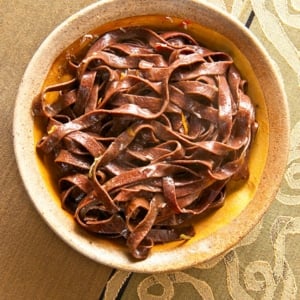
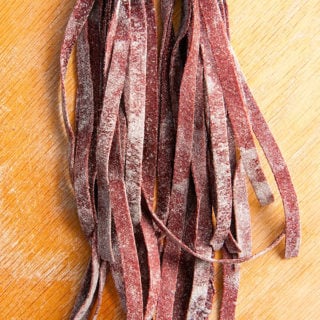
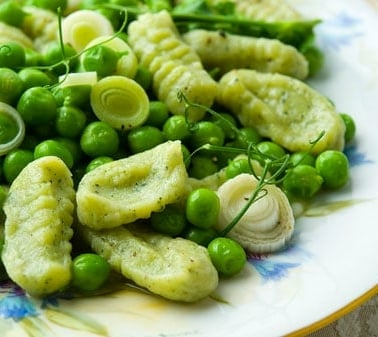
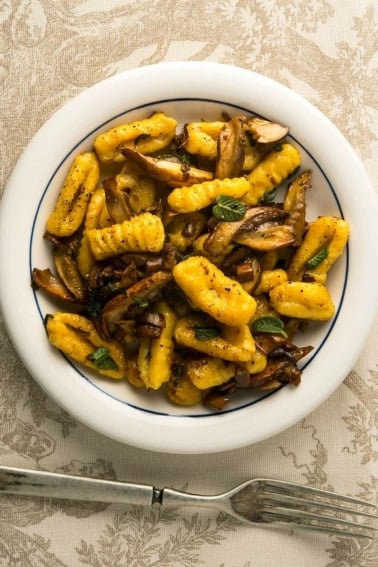
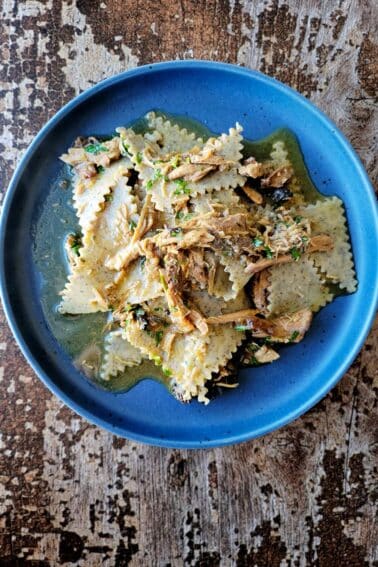
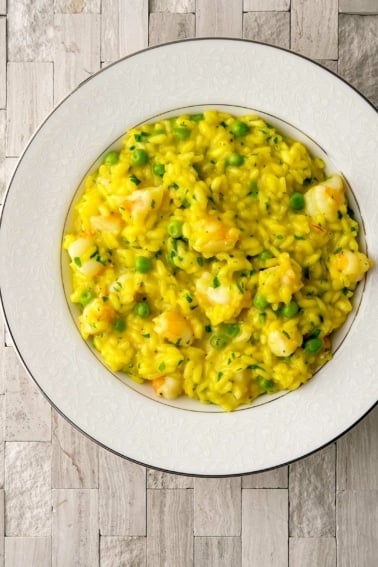
Any advice on where to find “oo” flour? I took a pasta class in Bologna a few months ago. Haven’t tried making it at home yet, but when I do I’d love to have the right ingredients. Maybe once I’m comfortable making tagliatelle on my own I’ll try blutnudeln.
Holden: Yes, use my seared venison kidneys recipe as a guide for that. I am not sure about the sauce, only I know it had red wine, butter and blood in it. Maybe add some tomato paste, too?
Noelle: Yep, it’s legal here in California. Lots of different ethnic groups use it.
Michael: If you do try makign blood sausage, try my version – it is a kind of a gateway blood sausage, where blood is the binder, not the sole ingredient. I prefer it to the all-blood versions, whose texture is kind of cakey…
Brant: You could definitely use another type of blood. I hear beef blood gets grainy, though. As for CWD, it is my understanding that internal organs are NOT off limits, only things with spinal matter. I have never heard of anyone saying to not eat liver, heart, etc in CWD areas. Brain, however, is indeed off limits. That said, we do not have chronic wasting disease in California.
Ken: I was thinking about blood sausage ravioli in blood pasta….
Nice title Hank. I just had to click. Way to reel me in!
THis is ABSOLUTELY incredible. The very idea is making my head spin. MUST make some now. How about blood filled ravioli in blood sauce, with a glass of warm blood beside it? I’m obviously getting carried away.
no comments, surprising given what you are presenting.
this sounds like a definite must try at some point–on that note 2 questions
1. since the blood makes up a large part of the flavor profile, would you consider other types of blood–or even a blood blend (thinking like a wine maker here)
2. venison kidney, and for that matter other internal organs from deer. I hunt a lot in areas where there is CWD and all the internal organs are off limits. Is this an issue in CA which you choose to ignore or are you lucky enough to eat antlers to tail freely. If you do ignore CWD warnings are you taking special prep measures because I hate to waste so much of the animal if it isn’t necessary.
Keep up the excellent posts and get ready for morel season….fresh asparagus/morels/trout=spring has sprung in the north east
Brant
Great post. Fascinating to read. Stretches the culinary mind a bit (a good thing). Having said that, as much as I enjoy making pasta, I am not ready for this one just yet. You hit it on the head describing the disconnect between the intellectual and the emotional side of our approach to food.
The blood in your pasta and your description of how you felt about eating it epitomizes honest food. And it challenges my own concepts of my own take on honest food.
I cooked and ate a rattlesnake I killed once. It was tasty. But I couldn’t get past the fact that it was rattlesnake. I suspect that blood pasta would be the same.
I also love making sausage. I suspect that blood sausage will be my first foray into blood food. I am not there yet. But your article has me thinking and as a result brings me closer to trying blood as an honest ingredient.
Thank you for that.
What a timely post- I am currently planning to get some pig’s blood for sausages and I’m sure we’ll have more than enough left to try this as well.
Is pig’s blood legal to sell/purchase where you live? Here in Michigan it is not, but through talking to a butcher at the farmers’ market, I have arranged to pick some up “for a school science project”. I want to do a batch of boudin noir and a batch of your morcilla.
Beautiful color to that dough!
I have some left over white tale venison kidneys from my last hunt, and would love to try and replicate the Incanto dish. How should I prepare the kidneys; a simple sear(?) and sauce for the pasta?
You are most welcome, Garrett! Looking forward to seeing what you do with it… 😉
Deborah: Hey, sorry about the RSS, but I had to do that – I kept getting my content stolen by other websites when I sent out the full feed.
Charles: I highly recommend it. At the very least, this is a conversation piece. But the flavor is for real – definitely worth making.
Christin: Not a bad idea. I am sure you could do this with beef blood.
Marshall: Nice Red Dawn reference! Takes me back to junior high school…
Tamar: You’ll just have to come out and visit us then…
Cork: Very cool! Put some vinegar or citric acid in the blood to keep it from coagulating. It will only keep for a week or so, even then.
If I wasn’t so pasta and glutein avoidant I’ve be all over this, Hank: it looks delish!
…I’m saving the blood from the pig that’ll be the main attraction at my slaughtering/butchering course this month, on the SF Peninsula, to make a boudin sec.
Damn would I have liked to have tasted that. It’s a fascinating dish — one that helps use up every part of the animal, and one that I’m unlikely to ever make myself.
Ah, well. It’s not the first time I’ve lived vicariously through HAGC.
“It’s not so bad. It’s not that bad.”
Little Red Dawn for your afternoon….
Gonna have to pass on pork blood but grass fed beef blood….MMMmm!!
I couldn’t look away. I wanted to look away. I just couldn’t. And I’m glad I didn’t because your description was fabulous, as always.
I love blood sausage — ate and cooked it often when I lived in France so this doesn’t seem like a big leap to me. I also have that amazing book. I do appreciate your comments about what it was like eating it, texture, flavor, and so on. I think with blood sausage the animal fat mitigates the copper/mineral/blood flavors somewhat. Still intrigued to give this a try.
My husband grew up in Germany and loves blood sausage, but I don’t think he’s had blutnudeln, which he would probably like.
However, I’m not making it for him. Blutwurst gives me the willies.
Tremendous post. Thanks for your work.
As always, delicious & informative! I’ve been reading your blog for awhile via Google Reader and I’m really sad that the posts don’t show up full text anymore, since I almost never click through to sites.
Looks super tasty! Thanks for the leftover pork blood by the way! =D